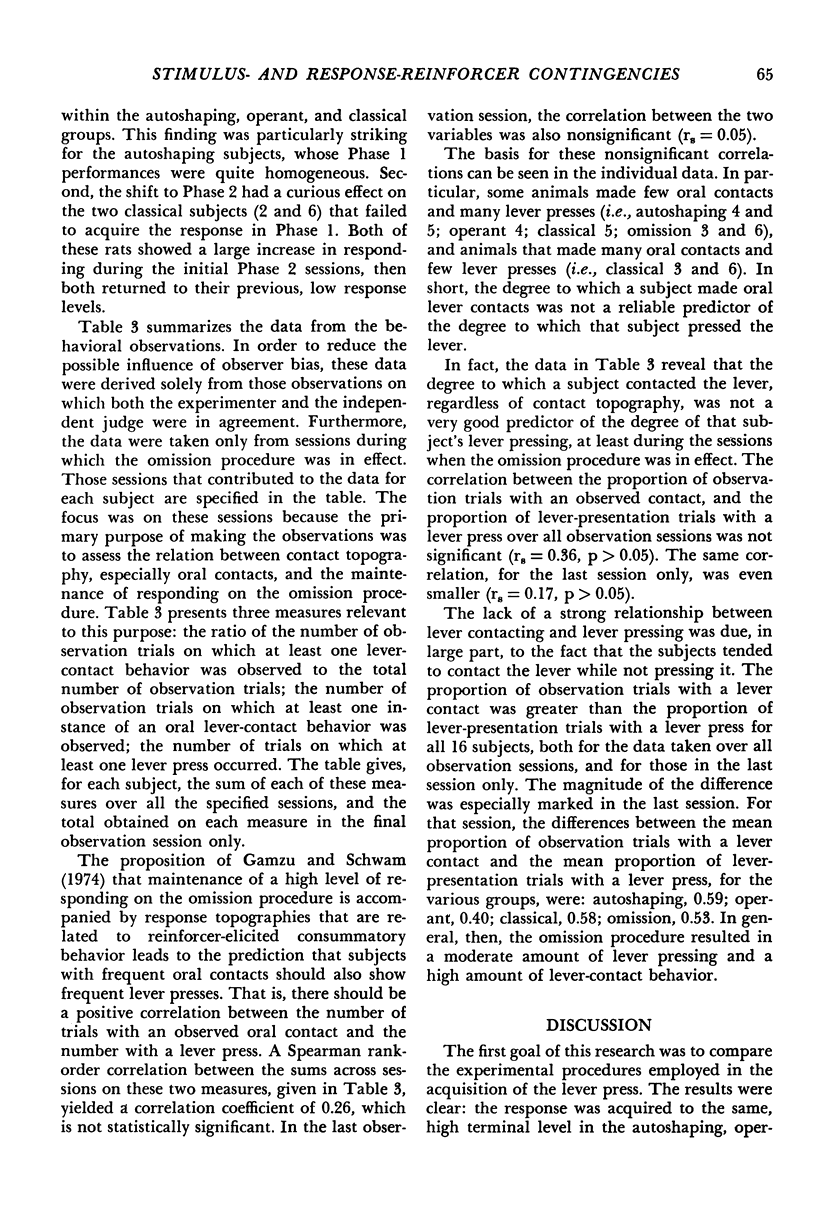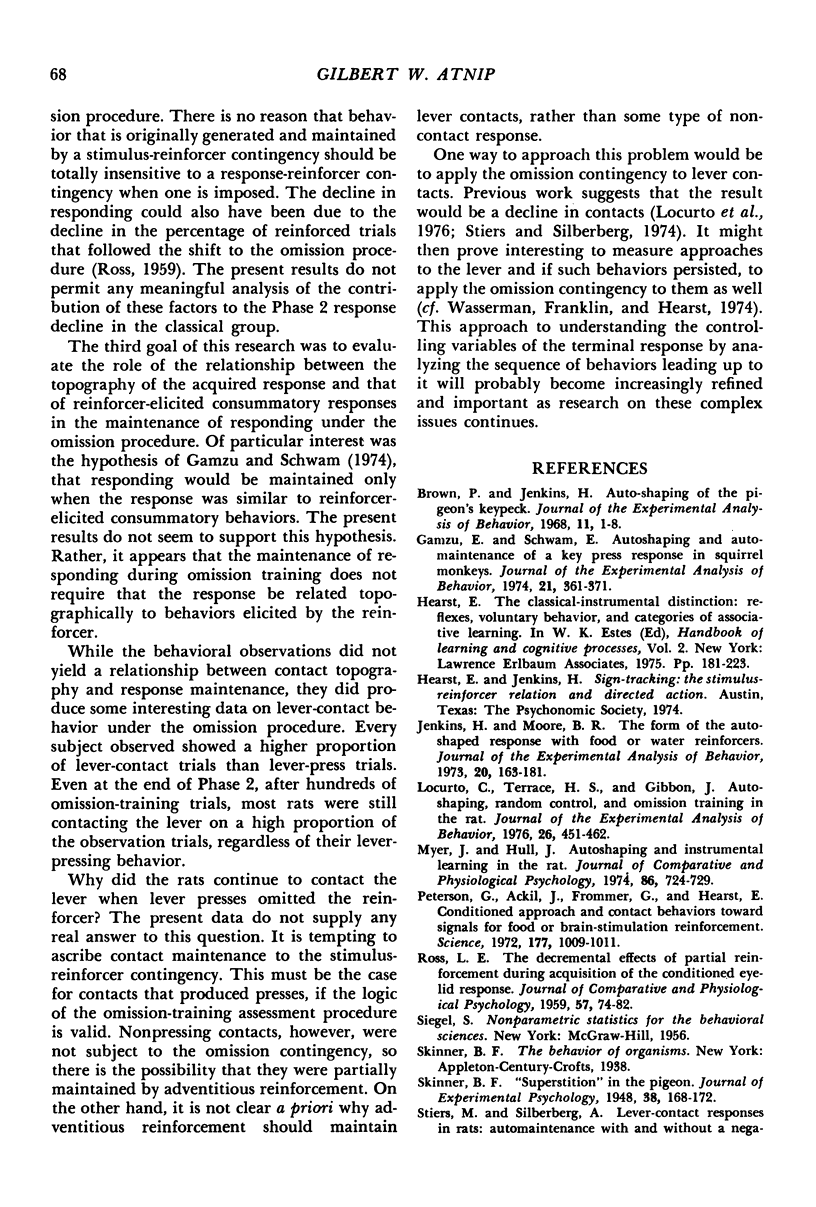Abstract
Separate groups of rats received 500 trials of lever-press training under autoshaping (food delivery followed 10-second lever presentations, or occurred immediately following a response); operant conditioning (responding was necessary for food delivery); and classical conditioning (food followed lever presentations regardless of responding). Each group then received 500 trials on an omission procedure in which food was omitted on trials with a response. Another group received 1000 trials on the omission procedure, and a fifth group, random control, received 1000 uncorrelated presentations of lever and food. The autoshaping, operant, and classical groups reached high response levels by the end of initial training. Acquisition was fastest in the autoshaping group. Responding remained consistently low in the control group. The omission group responded at a level between the control group and the other three groups. During omission training, responding in these three groups declined to the omission-group level. During omission training, the rats continued contacting the lever frequently after lever pressing had declined. Response maintenance under omission training seems not to require topographic similarity between the response and reinforcer-elicited consummatory behaviors.
Keywords: Stimulus-reinforcer contingency, response-reinforcer contingency, autoshaping, operant conditioning, classical conditioning, omission training, lever press, rats
Full text
PDF










Selected References
These references are in PubMed. This may not be the complete list of references from this article.
- Brown P. L., Jenkins H. M. Auto-shaping of the pigeon's key-peck. J Exp Anal Behav. 1968 Jan;11(1):1–8. doi: 10.1901/jeab.1968.11-1. [DOI] [PMC free article] [PubMed] [Google Scholar]
- Gamzu E., Schwam E. Autoshaping and automaintenance of a key-press response in squirrel monkeys. J Exp Anal Behav. 1974 Mar;21(2):361–371. doi: 10.1901/jeab.1974.21-361. [DOI] [PMC free article] [PubMed] [Google Scholar]
- Jenkins H. M., Moore B. R. The form of the auto-shaped response with food or water reinforcers. J Exp Anal Behav. 1973 Sep;20(2):163–181. doi: 10.1901/jeab.1973.20-163. [DOI] [PMC free article] [PubMed] [Google Scholar]
- Locurto C., Terrace H. S., Gibbon J. Autoshaping, random control, and omission training in the rat. J Exp Anal Behav. 1976 Nov;26(3):451–462. doi: 10.1901/jeab.1976.26-451. [DOI] [PMC free article] [PubMed] [Google Scholar]
- Peterson G. B., Ackilt J. E., Frommer G. P., Hearst E. S. Conditioned Approach and Contact Behavior toward Signals for Food or Brain-Stimulation Reinforcement. Science. 1972 Sep 15;177(4053):1009–1011. doi: 10.1126/science.177.4053.1009. [DOI] [PubMed] [Google Scholar]
- ROSS L. E. The decremental effects of partial reinforcement during acquisition of the conditioned eyelid response. J Exp Psychol. 1959 Feb;57(2):74–82. doi: 10.1037/h0046965. [DOI] [PubMed] [Google Scholar]
- Stiers M., Silberberg A. Lever-contact responses in rats: automaintenance with and without a negative response-reinforcer dependency. J Exp Anal Behav. 1974 Nov;22(3):497–506. doi: 10.1901/jeab.1974.22-497. [DOI] [PMC free article] [PubMed] [Google Scholar]
- Wasserman E. A., Franklin S. R., Hearst E. Pavlovian appetitive contingencies and approach versus withdrawal to conditioned stimuli in pigeons. J Comp Physiol Psychol. 1974 Apr;86(4):616–627. doi: 10.1037/h0036171. [DOI] [PubMed] [Google Scholar]
- Williams D. R., Williams H. Auto-maintenance in the pigeon: sustained pecking despite contingent non-reinforcement. J Exp Anal Behav. 1969 Jul;12(4):511–520. doi: 10.1901/jeab.1969.12-511. [DOI] [PMC free article] [PubMed] [Google Scholar]


